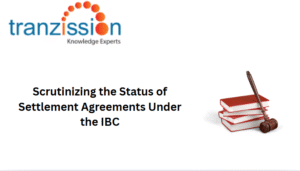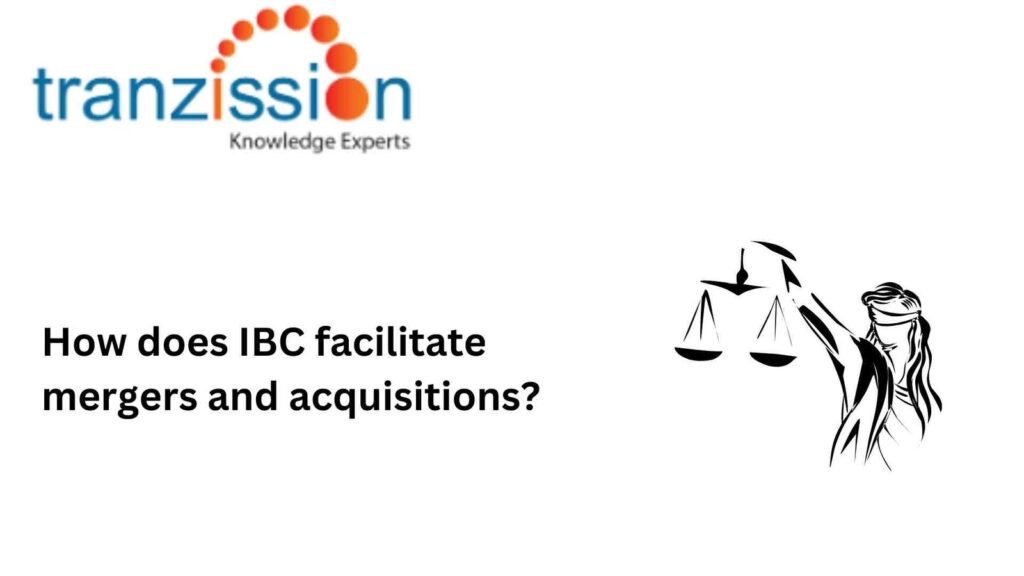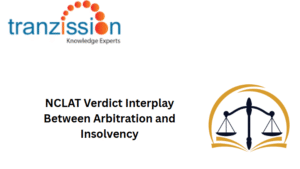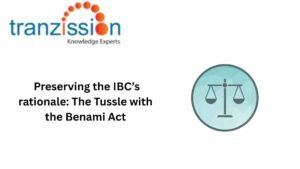
How does IBC facilitate mergers and acquisitions?

Table of Contents
The enactment of the Insolvency and Bankruptcy Code (IBC) in 2016 has introduced significant reforms to the insolvency framework in India. It provides an efficient mechanism for resolving distressed assets and reviving financially distressed companies. The IBC has the potential to influence mergers and acquisitions (M&A) as an attempt to revive an insolvent company.
Understanding Distressed M&A
Distressed mergers and acquisitions (M&A) are complex tranasations that involve the acquisition of a company or its assets when the company is experiencing financial distress or insolvency proceedings under the IBhttps://ibbi.gov.in/C. Potential investors and buyers have a crucial role in managing M&A, such as strategic investors or private equity firms, in acquiring such assets.
Challenges in Distressed M&A Before IBC:
Distressed M&A pre-IBC had many challenges pre-IBC, such as, it is difficult to ascertain the true value of dstressed companies, its potential liabilities, and the risk of insolvency proceedings. Many other issues include procedural delays, litigation risks, there may be a lack of transparency due to stakeholders not submitting truthful documents, and regulatory hurdles.
Read more : Addressing Grievances and Complaints under IBC
Key Provisions of IBC Relevant to Distressed M&A
Corporate Insolvency Resolution Process:
The corporate insolvency resolution process (CIRP) facilitates the identification and resolution of distressed companies, making them viable targets for acquisition. Under the IBC, the resolution professional acts as an independent expert who manages the debtor’s affairs, verifies creditors claims, and facilitates the resolution plan. The Committee fo Creditors (CoC) consists of the financial creditors of the corporate debtor. It has the power to approve or reject the proposed resolution plan and make key decision regarding the successful resolution of the corporate debtor.
Role of Section 31:
The approval of the IBC ensures legal certainty for buyers by making the terms of the plan binding on all stakeholders involved. This essentially provides a “clean slate” for the new buyer to operate the business without facing claims or legal challenges from creditors once the resolution plan is approved by the National Company Law Tribunal (NCLT). This means that buyers can confidently proceed with acquired a distressed company knowing that the outstanding debts and liabilities have been addressed and legally settled within the approved resolution plan.
Pre-packaged Insolvency Resolution Process:
The pre-packaged insolvency resolution process (PPIRP) under the IBC is a faster resolution process and more cost-efffective than CIRP. It greatly beneficial for micro, small, and medium enterprises (MSMEs) as it minimises disruptions to its business operations and provides a fresh start for MSMEs.
Read more : Balancing environmental claims during CIRP
Asset Value Maximization:
IBC ensures a transparent bidding process by mandating detailed information disclosure to potential bidders, by using public auction mechanisms.This allows stakeholder consultiation and implements strict eligibility checks. In this manner, IBC ensures a transparent bidding process to maximize asset value for stakeholders.
How IBC Facilitates Distressed M&A
- Streamlined Legal Framework: The CIRP under the IBC ensures a time-bound process, which under section 12 mandates that the process to be completed within 330 days of its commencement. The process allows for thorough due diligence on the distressed company’s assets and liabilities, which enables potential acquirers to make more informed decisions.
- Debt Restructuring and Resolution: By providing a structural framework for debt restructuring and resolution, IBC enables potential acquirers to purchase distressed assets at market driven valuations. The creditors, through the Committee of Creditors (CoC), have the power to approve a resolution plan that may include asset sales or mergers with other companies. This ultimately maximises the value of the distressed company’s assets while minimisnig losses for creditors. The reduction in debt burden for distressed companies, making them more attractive to potential buyers.
- Risk Mitigation for Buyers: IBC reduces acquisition risks and encourages investor confidence by providing a transparent, time-bound process for resolving distressed companies. Thereby, ensuring that potential acquirers have a clear understanding of the asset value and liabilities involved, minimising the risk of hidden issues and promoting a more predictable investment environment. IBC’s legal protections, hence, reduce acquisition risks and encourage investor confidence.
- Reviving the Economy: Distressed M&A under the IBC revives insolvent companies by allowing such companies to be acquired by healthier entities at discounted prices, which enables a turnaround through new management and operational improvements. This can protect jobs and simulate economic activity be introducing distressed assets back in the market for productive use.
Case Studies: Successful Distressed M&A Under IBC
Bhushan Steel Acquisition by Tata Steel:
Bhushan Steel (BSL) was taken before the NCLT in 2017 after accumulating losses and defaulting loans. In 2018, Tata Steel acquired a 72.65% in BSL through its subsidiary Bamnipal Steel. Tata Steel paid Rs. 35,200 crore to BSL’s creditors and Rs. 1,200 crore to its operational creditors. This acquisition highlighted the resolution timeline and economic benefits.
Essar Steel Resolution:
The Essar Steel resolution was a landmark case that established the credibility and transparency of the IBC as a resolution mechanism for distressed assets. ArcelorMittal’s acquisition of Essar Steel under the IBC included a payment of Rs. 42,000 and an equity infusion of Rs.8,000 crore. This acquisition showcased IBC’s efficiency in facilitating large-scale distressed M&A.
Alok Industries Acquisition:
Reliance Industries (RIL) and JM Financial Asset Reconstruction Company acquired Alok Industries in 2020 through a debt resolution process under IBC. In a distressed M&A, time is a major consideration. Due diligence and negotiating transaction documents can take time which may increase financial distress. The longer a company is distressed, the more liabilities it will have, and the more creditors may object to the transactions.
Benefits of Distressed M&A Under IBC
The IBC has benefited distressed M&A which leads to the successful resolution of companies facing financial issues. Once a resolution plan is approved by the CoC and NCLT, the successful resolution applicant, the investor or buyer, is protected from any previous claims. This makes distressed M&A more attractive to potential buyers and revitalisatoin of failing businesses. The distressed M&A help stabilise the market by ensuring the continuation of the business operations of the company, restoring the value of the assets, including non-performing assets, and the recovery for creditors. It also has increased investor interest in distressed assets due to the potential for acquiring undervalued companies at lower rates and the streamlined resolution processes under the IBC.
Challenges and Criticisms
The primary challenge in distressed M&A is the delay in the resolution process due to judicial bottlenecks, such as the backlog of cases in the NCLT. There are issues in valuing assets in mergers and acquisitions due to inaccurate date availability, difficulty in estimating future cash flows due to uncertain market conditions, potential for asset liquidation values being significantly lower than book value, legal complexities, etc. In the insolvency framework itself, there is a lack of capacity among insolvency professionals and institutions.
Emerging Trends and Recommendations
The IBC includes procedures for cross-border insolvency matters, although reforms need to be introduced to address the gaps in the current framework. However, there has been an increasing interest of foreign investors in Indian distressed assets. There needs to be more streamlined foreign proceeding recognition, better communication and cooperation between jurisdictions, and more flexible mechanisms for managing concurrent proceedings to enable international distressed M&A. To enhance the due diligence of distressed M&A, artificial intelligence and data analytics can be used to establish a centralised digital platform, etc. Insolvency professionals are recommended to focus on improving resolution timelines and ensuring transparency throughout CIRP to achieve better outcomes for creditors and improve the efficiency of the system.
Conclusion
The IBC has significantly revolutionised M&A in India by creating a transparent and time-bound process for resolving distressed assets. This allows businesses to acquire valuable assets at competitive prices. Creditors can facilitate faster debt recovery under the current insolvency framework as it ensures that CIRP must be completed within 330 days. It has ultimately boosted the Indian economy by injecting liquidity and facilitating corporate restructuring within struggling companies.





